How to Make Gluten-Free Sourdough Starter
This post may contain affiliate links. Read our disclosure policy here.
Sourdough is a delicious and healthy way to make bread. But how can you make a successful gluten-free sourdough starter for those who need to avoid wheat? Here’s a step-by-step tutorial!
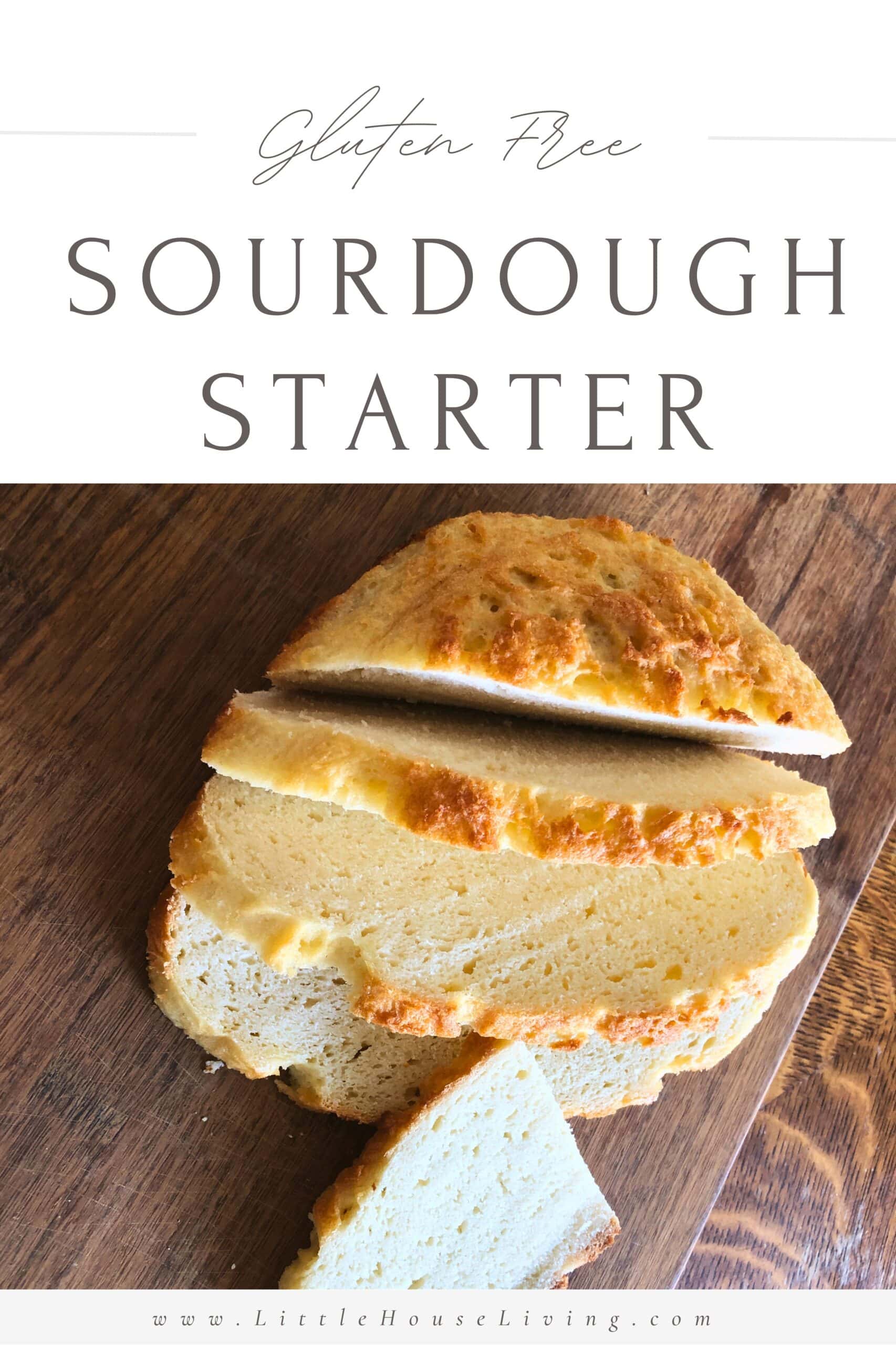
How to Make Gluten-Free Sourdough Starter: A Beginner’s Guide
Enjoy this guest post from Kendra Paulton! Want to guest post on LHL? See here for details.
A special shout-out to my friend Jenni Anderson who developed this recipe, told me how she did it, and allowed me to write this article for you all! Jenni also documented the entire process with these fun photos!
Are you a gluten-free enthusiast who misses the tangy and delicious flavor of sourdough bread? Look no further! In this blog post, our guest will guide you through creating your very own gluten-free sourdough starter.
With a few simple ingredients and a little patience, you’ll be able to enjoy homemade gluten-free sourdough bread in no time. Whether you have dietary restrictions or want to explore the world of sourdough, this beginner’s guide is for you.
So grab your apron, roll up your sleeves, and let’s dive into the wonderful world of gluten-free sourdough together. Trust me, it’s gonna be one tasty adventure!
What is Sourdough Bread?
Sourdough bread is the oldest type of leavened bread, dating back thousands of years. Made simply from flour, water, and a little bit of time, sourdough starter cultures develop a “wild” yeast that causes the starter (and resulting bread products) to rise without the addition of conventional instant-rise yeast.
Because it is naturally leavened, sourdough is a slower bread-baking process, but many say the results are worth it.

Is Sourdough the Healthiest Bread?
According to WebMD, sourdough bread is a nutritional powerhouse that your body can easily absorb.
The magic happens when lactic acid bacteria in the bread work their wonders on the nutrients. They eliminate acids found in other bread types, unlocking the full potential of nutrients like folate, potassium, and magnesium.
But that’s not all! The long fermentation process also produces lactic acid, which changes the structure of the bread molecules. This means slower absorption by your body, resulting in a lower glycemic index.
So, not only is sourdough delicious, but it’s also a smart choice for your health!

Is Sourdough Bread From Wheat?
Traditional sourdough with that delicious, sought-after tangy flavor is typically made with wheat flour.
While many gluten-sensitive people have reported being able to eat sourdough bread when they can’t eat regular yeast-based wheat bread, people with true allergies to wheat or celiac disease may not be able to safely digest sourdough despite its claim to digestive fame.
How to Make Gluten-Free Sourdough Starter from Scratch
I am here to tell you that you can make gluten-free sourdough bread from scratch in your own home, and it’s not as hard as you might think! For this article, I have teamed up with my good friend Jenni, a mama to four in a mostly gluten-free house!
Jenni successfully cultivated her very own gluten-free sourdough starter and baked her first loaf of bread in just a week! She said the resulting bread was so good they truly couldn’t tell the loaf was gluten-free! How’s that for fantastic?!
To make your own gluten-free sourdough starter, you only need a few basic kitchen items, two simple ingredients, and a bit of patience. (And, if you’re like me, maybe setting a few reminders on your phone would help, too!)
Ingredients in Gluten-Free Sourdough Starter
- Brown Rice Flour. You can purchase this in bulk from azurestandard.com or your local grocery store. You could also make this with other whole grain flours like sorghum flour, buckwheat flour, and teff flour if you don’t want to use rice. Do not use a gluten-free flour blend. It will not work for making sourdough starter as it can contain starches and binders.
- Water. This should preferably be filtered and non-chlorinated. Do not use tap water.
- Mason Jar. You can use a pint-sized or quart-sized jar.
- Silicone Spatula. You need to use something that is a silicone material for stirring and scraping the sides of the jar. Never use metal.
- Kitchen Scale. You need something that can measure weight by grams.
Step By Step Instructions for Making Gluten-Free Sourdough Starter

Day One
Mix in a small glass jar 30 grams of brown rice flour and 30 grams of water. Stir really well so that a lot of oxygen can get into the flour/water mixture
Clean down the sides of the jar to keep it all together (I used a wet towel and cleaned it down well).
Cover loosely and leave at room temperature – about 68 degrees.
Stir once or twice until the starter begins to activate; make sure to keep the sides of the inside of the jar clean, and always cover loosely with a lid after each stir.

Day Two
Stir once or twice until the starter begins to activate; make sure to keep the sides of the inside of the jar clean, and always cover loosely with a lid after each stir. The consistency of your starter may not change much these first few days.
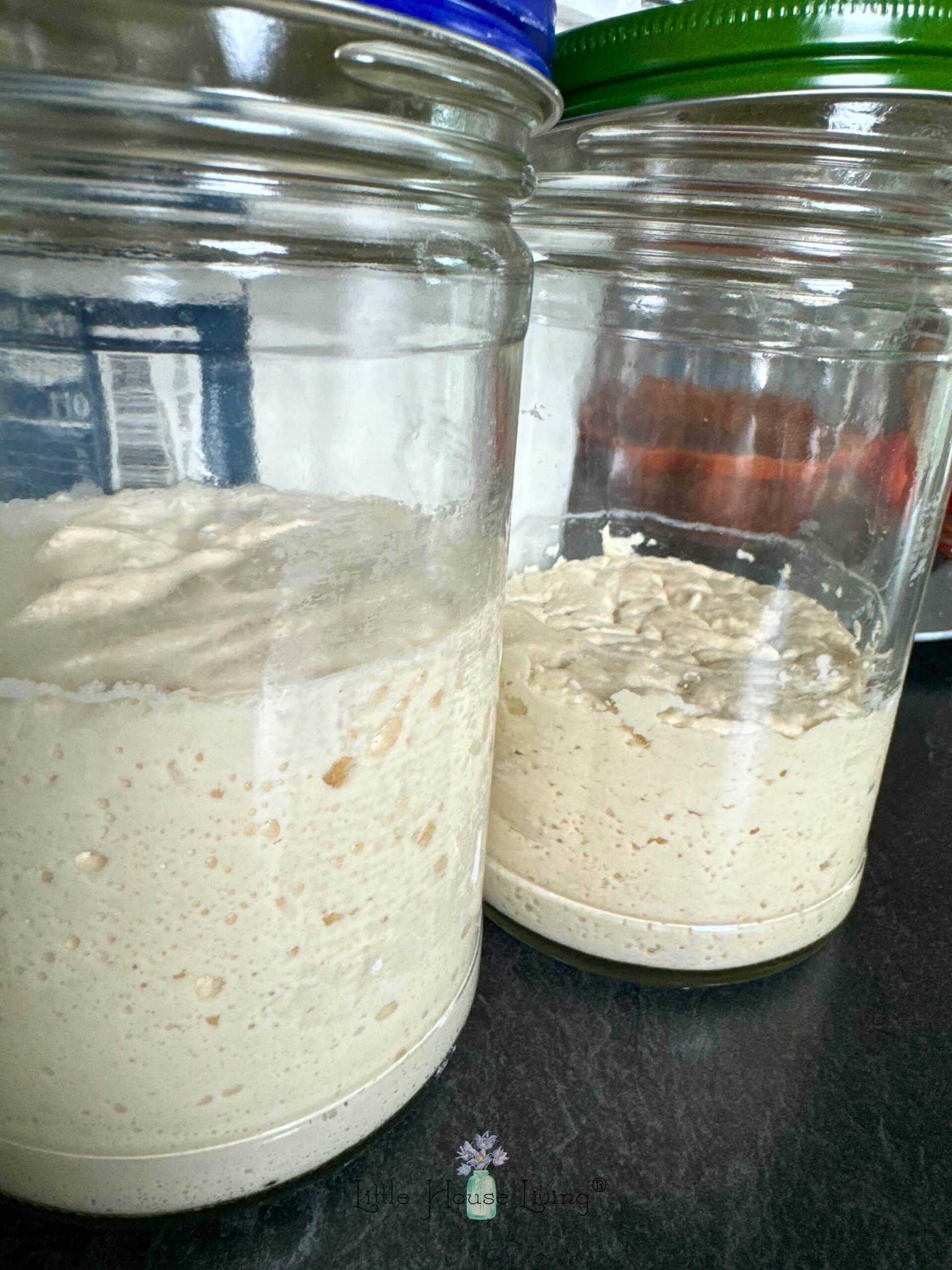
Day Three
Stir once or twice until the starter begins to activate; make sure to keep the sides of the inside of the jar clean, and always cover loosely with a lid after each stir.
Tip: Continue to DO THIS until you see bubbles beginning to form in your flour mixture!
Day Four
This is usually when the bubbles will begin to appear in your starter, and it will take on a “tangy” or “sour“ odor. Congratulations! You have cultivated your very own gluten-free sourdough starter! Now, let’s feed it up.
Start feeding and discarding. Keep quantities small. Scoop about two teaspoons of starter and put into a clean small jar. Add 30 grams of fresh brown rice flour and 30 grams of filtered water. Discard the rest of the starter. This will be your typical daily feeding schedule for this week. You will later be able to use the discard for other sourdough recipes but don’t use the discard from the first few days.
Stir well. Scrape down the sides of the jar and cover loosely. The liquid that is on the top of your starter each morning is called hooch and is perfectly normal. If it ever smells moldy or off, you may need to toss it.
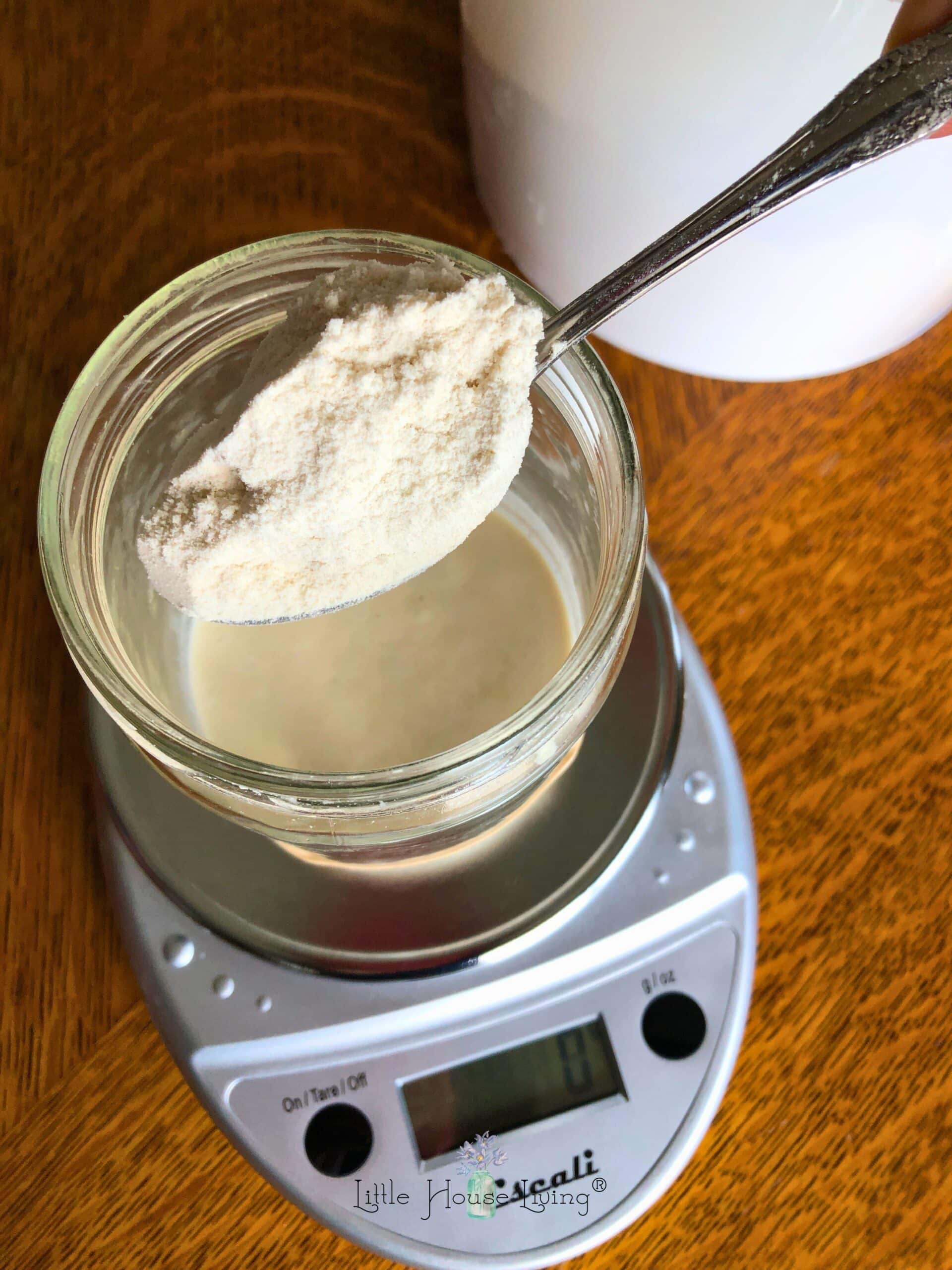
Tip: Any additional starter beyond the two teaspoons can be kept in the fridge and is called “discard.” You will continue to add to this discard jar each time you feed your starter fresh flour and water. Eventually, when you have enough, you can use the discard to make many delicious sourdough recipes!
Days Five to Six
Continue to repeat day four until you start to see big bubbles in your starter.
Tip: Mark your jar with a Sharpie after you feed the starter. This way, you will be able to see when it has truly risen and how long it took to rise!
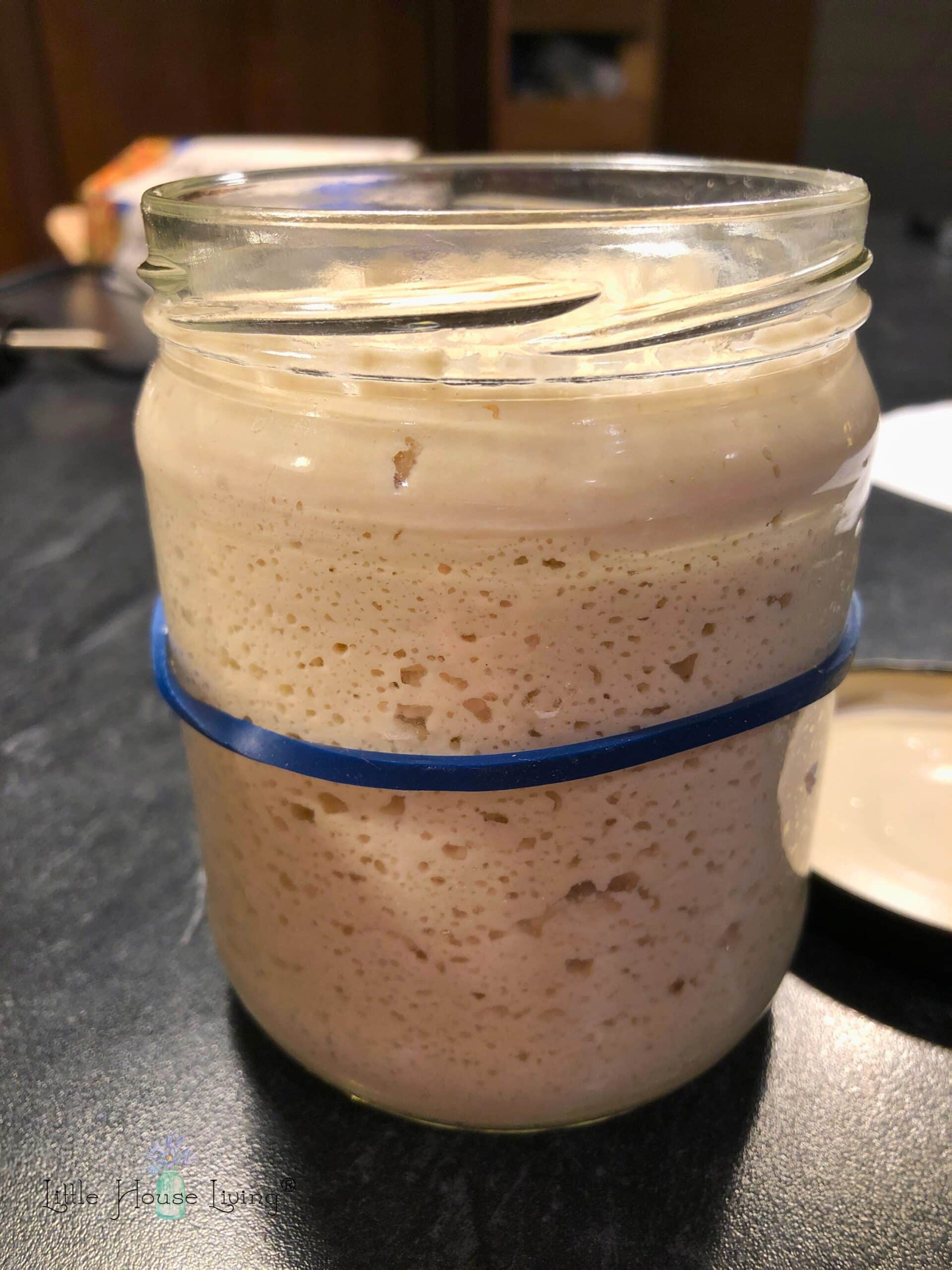
Day Seven
If your starter is ready with big bubbles, you are ready to feed up your starter and bake bread!
FEED UP your starter. Do not discard on this day! Simply mix in 50 grams of flour and 50 grams of water and stir well.
Mark the side of your jar with a Sharpie (I also like to write the time next to the line – Sharpie wash right off Mason jars with soap and water!)
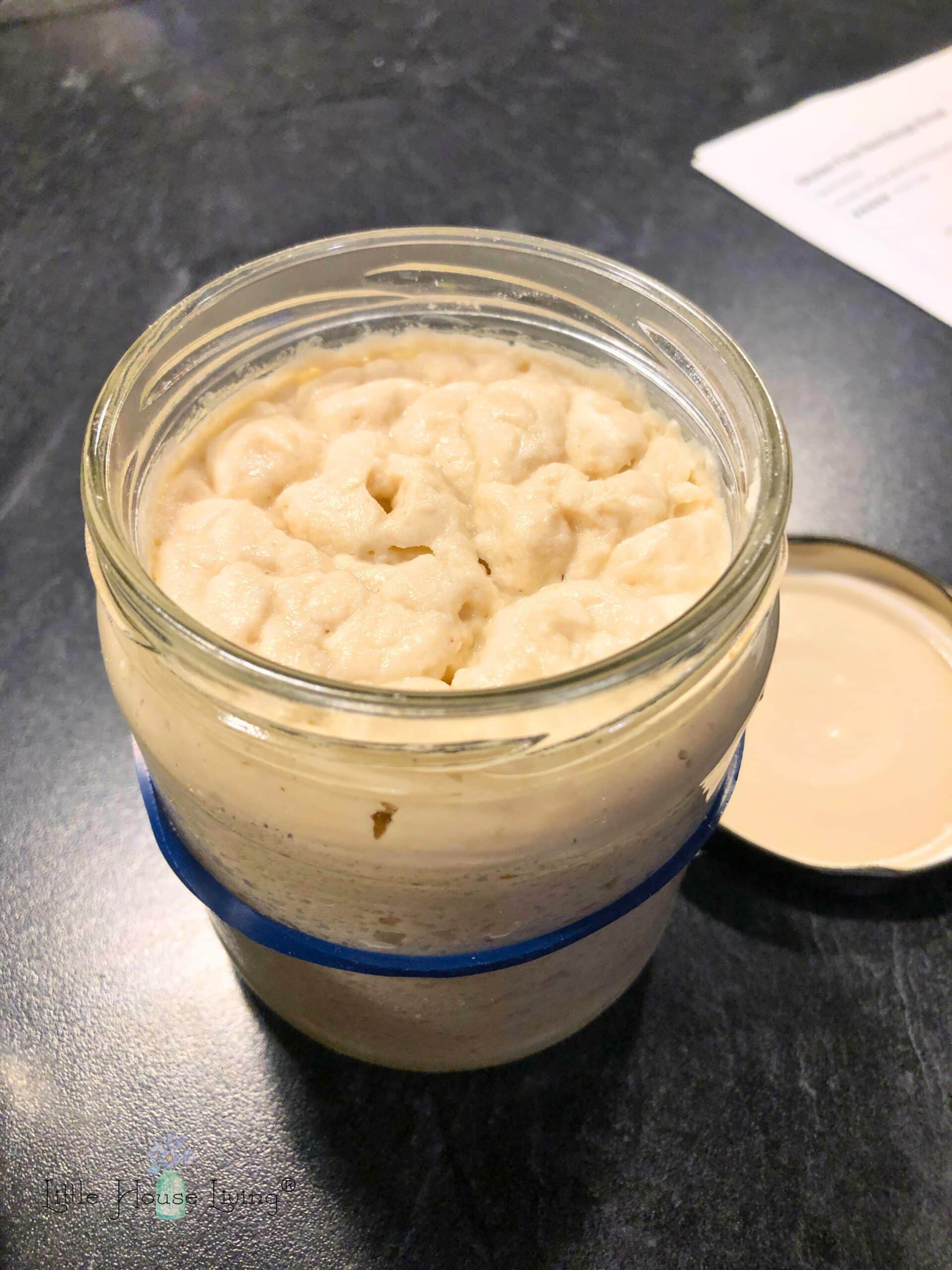
Keep it in a warm place, such as in your oven (turned off) with the light on, or just on your kitchen counter if the room is moderately warm.
By late afternoon, your starter should have risen up to double and be very bubbly. You’re now ready to start your sourdough loaf!

Sourdough Starter Feeding Tips for Beginners
- Healthy and active starter can be stored in the refrigerator as it’s ready for baking! Just set it out to room temperature before baking with it.
- Never use all your starter as you will want to keep them to carry on more sourdough starters.
- Remember, you only need a couple of teaspoons of starter saved in a jar and fed with 30 grams flour/30 grams water to make a new batch!
- There are a lot of gluten-free sourdough bread recipes online, such as this one from the Rancher’s Homestead, which was excellent! (Shown baked here in the pictures.)
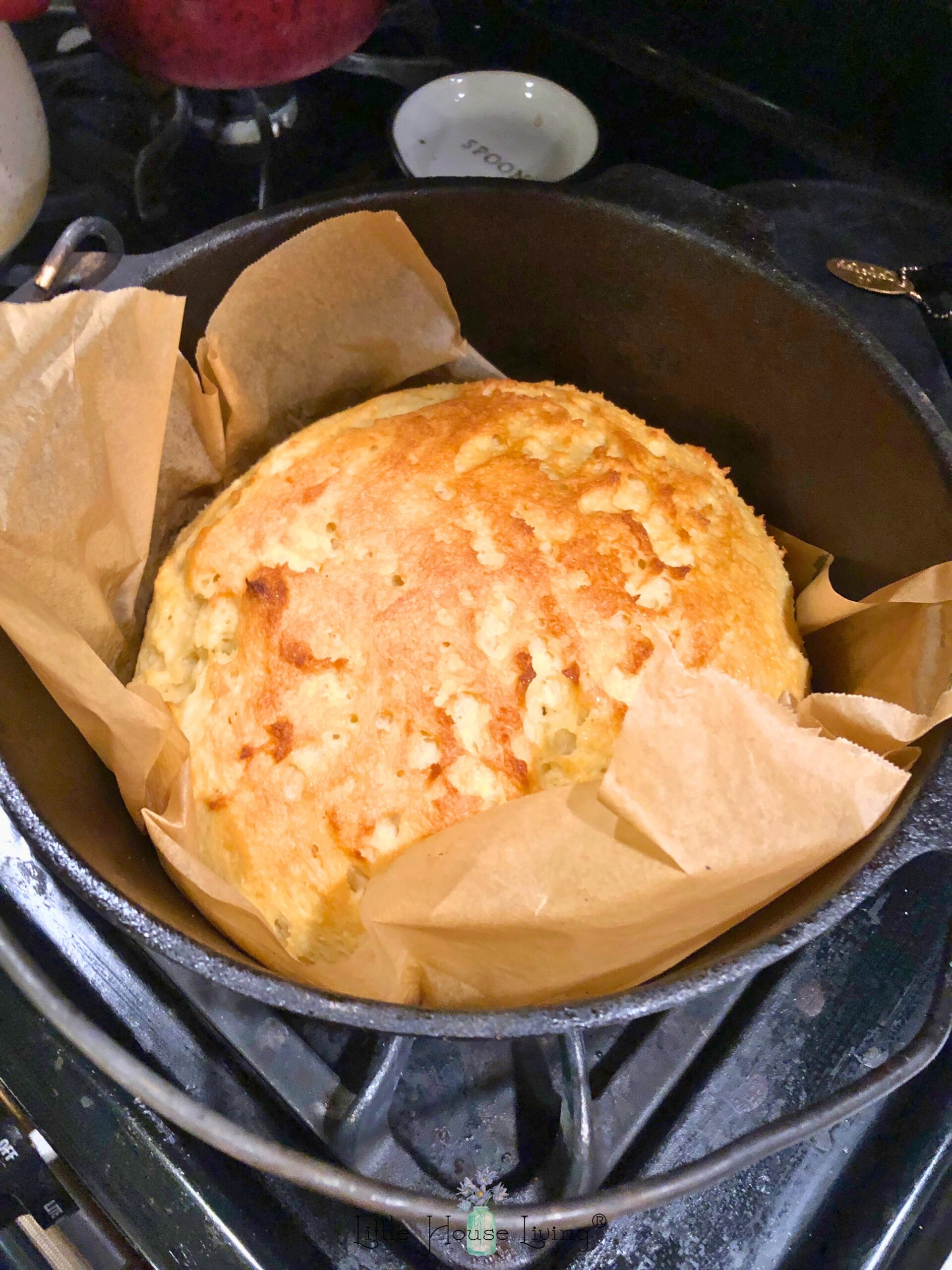
We couldn’t tell it was gluten-free; it turned out so well! If you are like me and have said to yourself for months and months that you wish you could bake gluten-free sourdough bread, let me encourage you that now is the time! It wasn’t as “scary” as I had worked it up in my head to be, and it was so much fun and very satisfying!
I will say that with gluten-free sourdough bread, the dough will absolutely be stickier than regular sourdough bread simply because the binding properties of gluten are not there. So, I’m sorry, but you probably won’t be able to get the pretty score patterns that regular sourdough bread is known for.
BUT you will be able to get delicious, homemade, tangy sourdough bread that will rival any gluten-filled sourdough bread for flavor and texture! Happy baking!
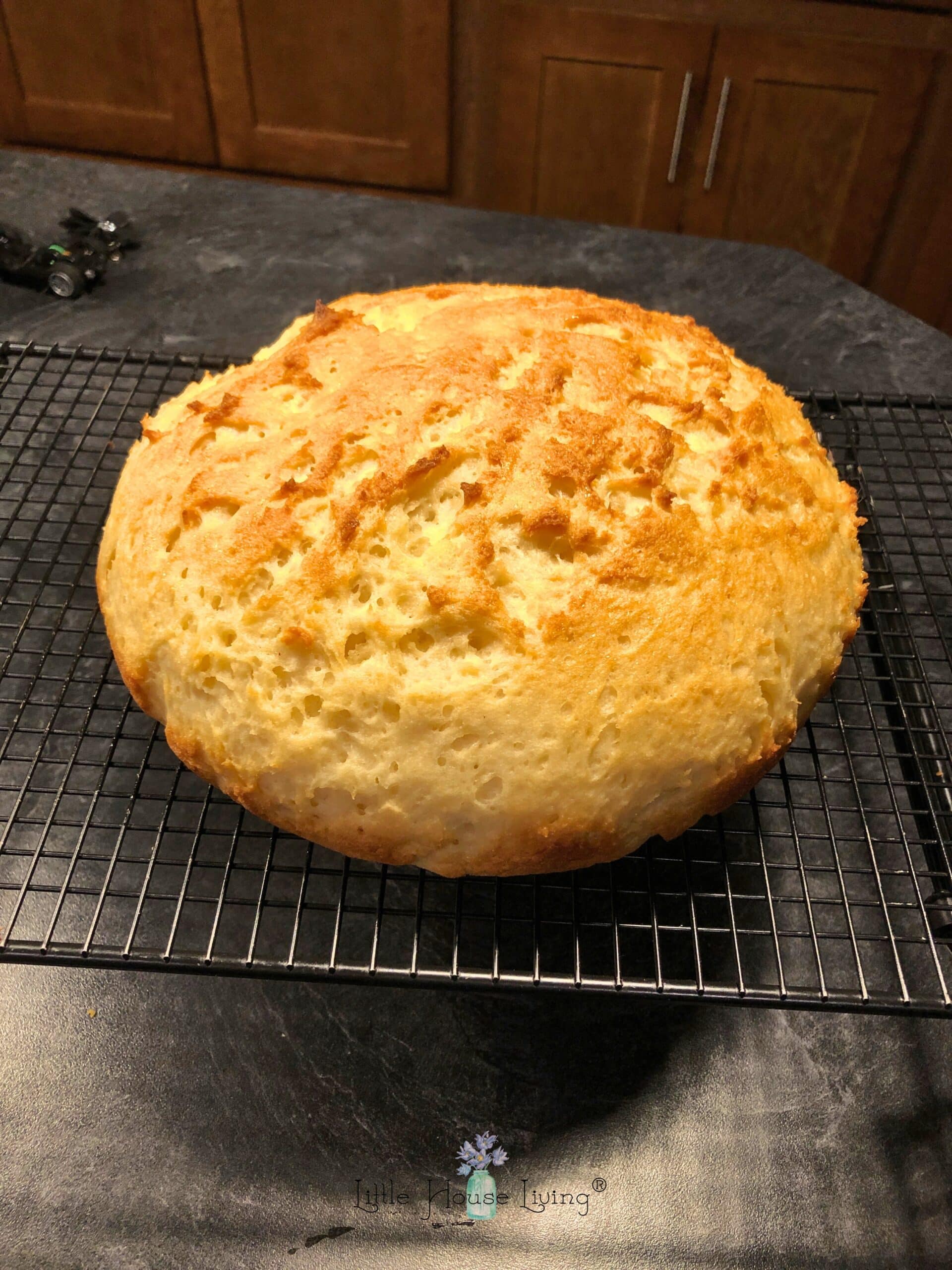
More Sourdough Bread Recipes from Scratch
- Sourdough Caramel Rolls Recipe
- Ridiculously Easy Sourdough Pizza Crust
- Sourdough Part 1
- Sourdough Part 2

And there you have it! Making your own gluten-free sourdough starter may seem intimidating at first, but I hope this guide has shown you just how easy and fun it can be. Plus, the satisfaction of baking your own delicious bread from scratch is truly unbeatable.
So go ahead, give it a try, and let me know how it turns out! And if you have any tips or tricks for making the perfect gluten-free sourdough bread, feel free to share them in the comments below.
Have you tried making your own sourdough bread? Share some tips in the comment section!
Did you find this post helpful? Be sure and share with your friends on Facebook, Twitter, Instagram, Pinterest, and through Email using the sharing buttons below!

Kendra Paulton is a freelance writer, photographer, and ranch mama. She resides on a fourth-generation cattle ranch with her husband, six young children, and a pack of German Shepherds. Visit her website www.dakotacanyonbeef.com to connect.
This blog post on How to Make Gluten-Free Sourdough Starter was originally published on Little House Living in November 2023.
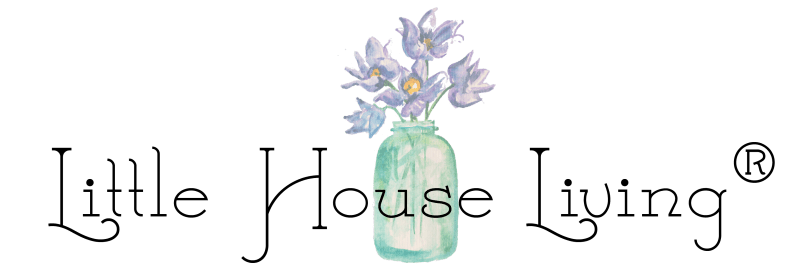
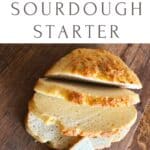

Where can I find the bread recipe?
The link to the bread recipe that was used for these pictures is in the blog post under “Feeding Tips”.